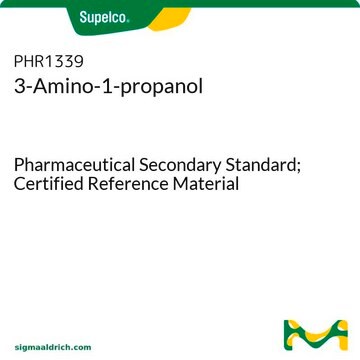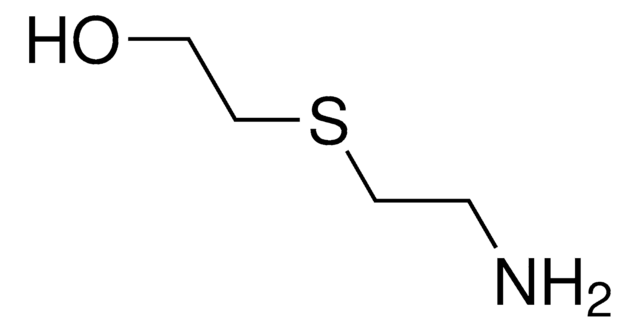01887
3-Amino-1-propanol
analytical standard
Sinónimos:
3-Aminopropyl alcohol
About This Item
Productos recomendados
grade
analytical standard
Quality Level
vapor density
2.59 (vs air)
vapor pressure
2.1 mmHg ( 20 °C)
assay
≥99.5% (GC)
autoignition temp.
770 °F
shelf life
limited shelf life, expiry date on the label
technique(s)
HPLC: suitable
gas chromatography (GC): suitable
refractive index
n20/D 1.4598 (lit.)
n20/D 1.461
bp
184-187 °C (lit.)
mp
10-12 °C (lit.)
density
0.982 g/mL at 20 °C (lit.)
application(s)
environmental
format
neat
SMILES string
NCCCO
InChI
1S/C3H9NO/c4-2-1-3-5/h5H,1-4H2
InChI key
WUGQZFFCHPXWKQ-UHFFFAOYSA-N
¿Está buscando productos similares? Visita Guía de comparación de productos
Categorías relacionadas
General description
Recommended products
signalword
Danger
hcodes
Hazard Classifications
Acute Tox. 4 Oral - Eye Dam. 1 - Skin Corr. 1B
Storage Class
8A - Combustible corrosive hazardous materials
wgk_germany
WGK 1
flash_point_f
212.0 °F - Pensky-Martens closed cup
flash_point_c
100 °C - Pensky-Martens closed cup
ppe
Faceshields, Gloves, Goggles, type ABEK (EN14387) respirator filter
Choose from one of the most recent versions:
¿Ya tiene este producto?
Encuentre la documentación para los productos que ha comprado recientemente en la Biblioteca de documentos.
Nuestro equipo de científicos tiene experiencia en todas las áreas de investigación: Ciencias de la vida, Ciencia de los materiales, Síntesis química, Cromatografía, Analítica y muchas otras.
Póngase en contacto con el Servicio técnico







